Key takeaways:
- Engaging children in hands-on activities, like building birdhouses and participating in clean-up days, fosters a sense of responsibility and connection to the environment.
- Collaborating with local organizations enhances learning through real-life interactions, making conservation concepts more tangible and memorable for kids.
- Utilizing technology, such as apps for wildlife tracking and virtual field trips, expands children’s engagement and encourages them to explore nature creatively.
- Measuring the impact of conservation efforts through feedback and ongoing engagement helps refine programs and inspires a deeper commitment among children.
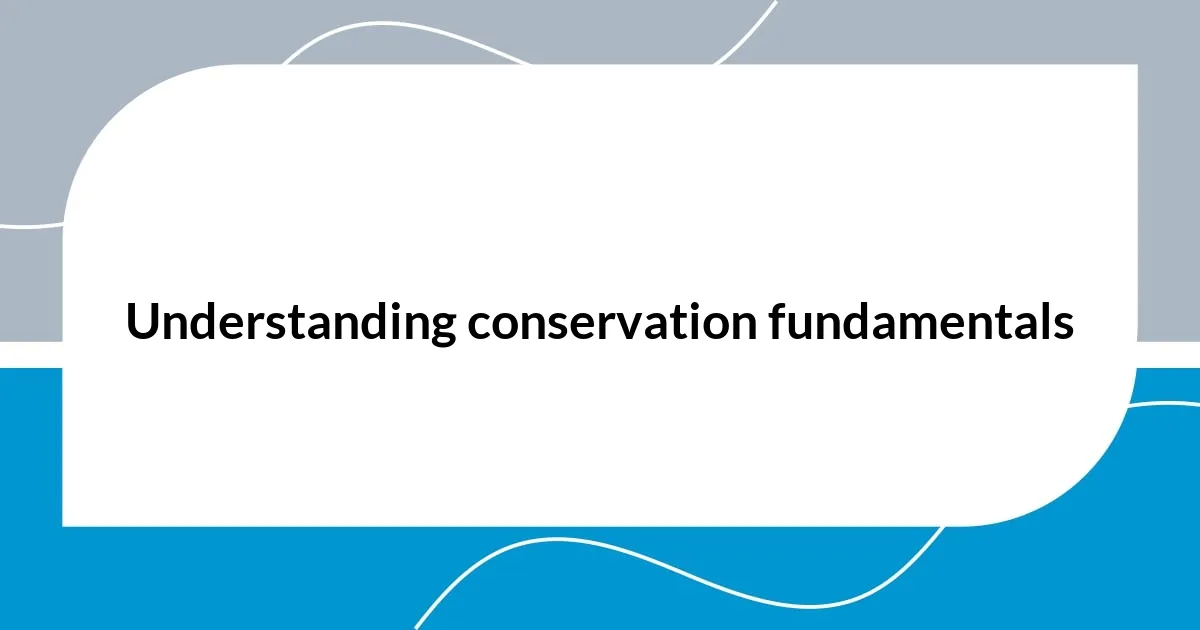
Understanding conservation fundamentals
When I first started teaching kids about conservation, I realized that understanding the basics is crucial. Conservation isn’t just about saving endangered animals; it’s about ensuring that our entire ecosystem thrives. Have you ever seen a child’s eyes light up at the sight of a butterfly? That spark of wonder often ignites a desire to protect our environment.
As we talked about habitats, I shared a story about how my own backyard transformed when we planted native flowers. The kids were amazed to see all sorts of wildlife flock to our little paradise. It made me wonder: how can we expect future generations to appreciate what they don’t see? Understanding that every living thing is interconnected helps cultivate a sense of responsibility in young minds.
In addition, I discovered that engaging kids with hands-on activities makes these fundamental concepts come alive. When they helped me build a birdhouse, they weren’t just building a shelter; they were learning about the importance of providing safe spaces for wildlife. It struck me how building something tangible not only educates but also empowers them to take action. What simple action can you take today to foster a similar experience in your children?
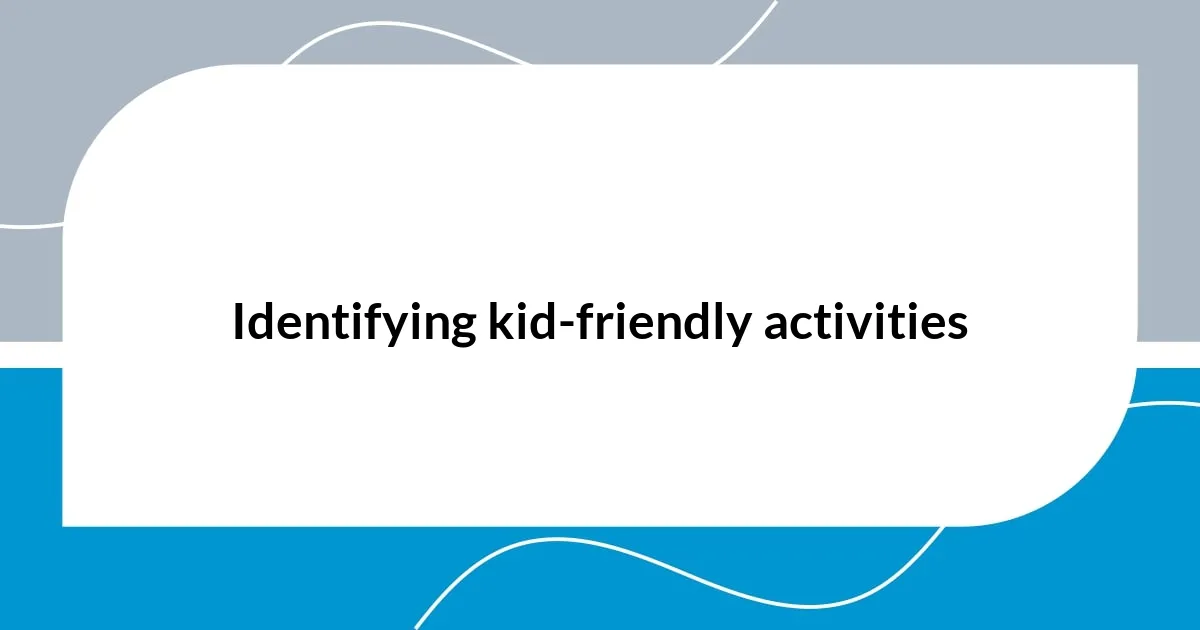
Identifying kid-friendly activities
To identify kid-friendly activities in conservation, I’ve learned that it’s all about connection and accessibility. For instance, one day, I took a group of kids to a local park for a clean-up day. As we picked up trash, we talked about how debris affects wildlife. I saw their faces light up when they discovered a hidden nest. It was in that moment they realized that even small actions could make a big difference.
Here are some engaging activities that can really resonate with kids:
- Nature Scavenger Hunts: Creating a list of items for kids to find helps them connect with their surroundings.
- Gardening: Planting a small vegetable or flower garden teaches responsibility and shows the beauty of growth.
- Wildlife Observation: Setting up a birdwatching station encourages patience and appreciation for local fauna.
- Crafting Recycling Projects: Using recyclables for crafts not only fosters creativity but also reinforces the message of reducing waste.
- Local Habitat Walks: Exploring nearby habitats helps kids learn about ecosystems and their inhabitants firsthand.
Engaging kids through these activities can turn passive observation into active participation.
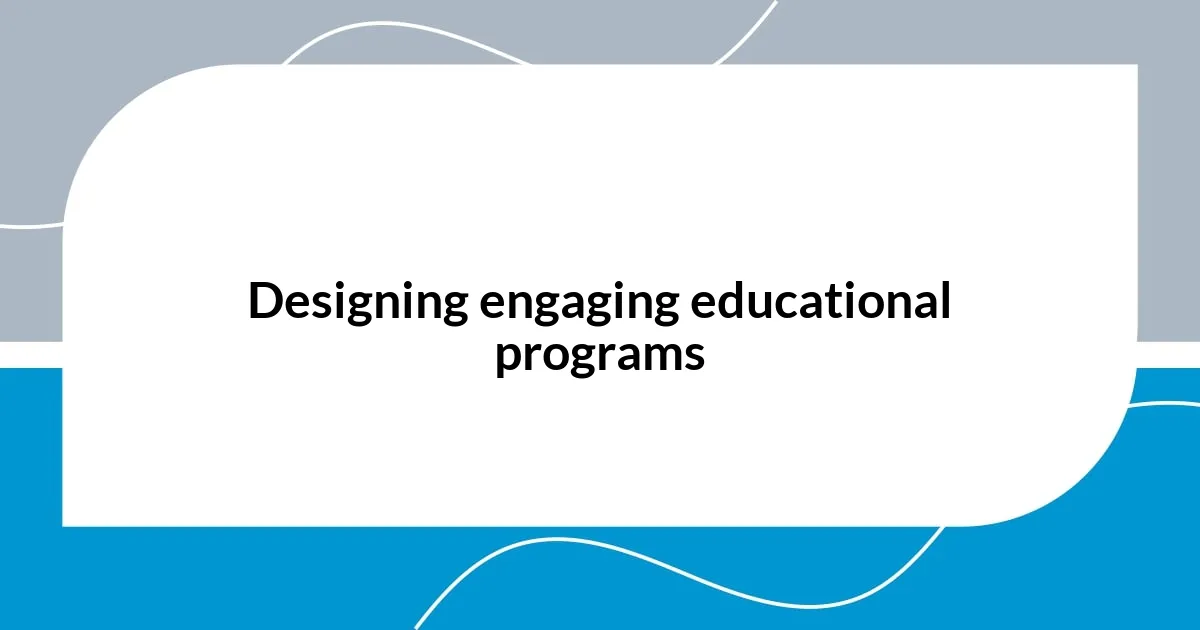
Designing engaging educational programs
Designing educational programs that truly engage kids in conservation requires creativity and passion. From my experience, it’s essential to blend fun with learning. For example, during a recent workshop, I incorporated storytelling elements that revolved around local wildlife heroes. Seeing the kids giggle and cheer as these characters encountered obstacles made the lessons memorable. It reminded me that when kids are emotionally invested, they retain more information and develop a deeper connection to nature.
Next, I found that using technology can enhance engagement. In one of my programs, I introduced an app that allowed kids to track wildlife sightings. It was fascinating to watch as they eagerly shared their findings with one another. How does technology play a role in your teaching approach? By integrating digital tools, I witnessed students not only learning but also collaborating and communicating in ways I hadn’t imagined. The excitement of showcasing their contributions on a shared platform added a layer of community to our efforts.
Another key element is incorporating challenges and rewards. My team devised a “Conservation Challenge” where kids collected points for each eco-friendly action they completed, ranging from recycling to planting trees. The competitive spirit was palpable, and I noticed friendships blossoming as they teamed up to tackle various tasks. I believe that turning conservation into a game adds an element of joy and urgency that inspires children to act.
| Program Element | Example |
|---|---|
| Storytelling | Created local wildlife heroes with challenges |
| Technology | Wildlife tracking app for kids |
| Challenges and Rewards | Conservation Challenge with point system |
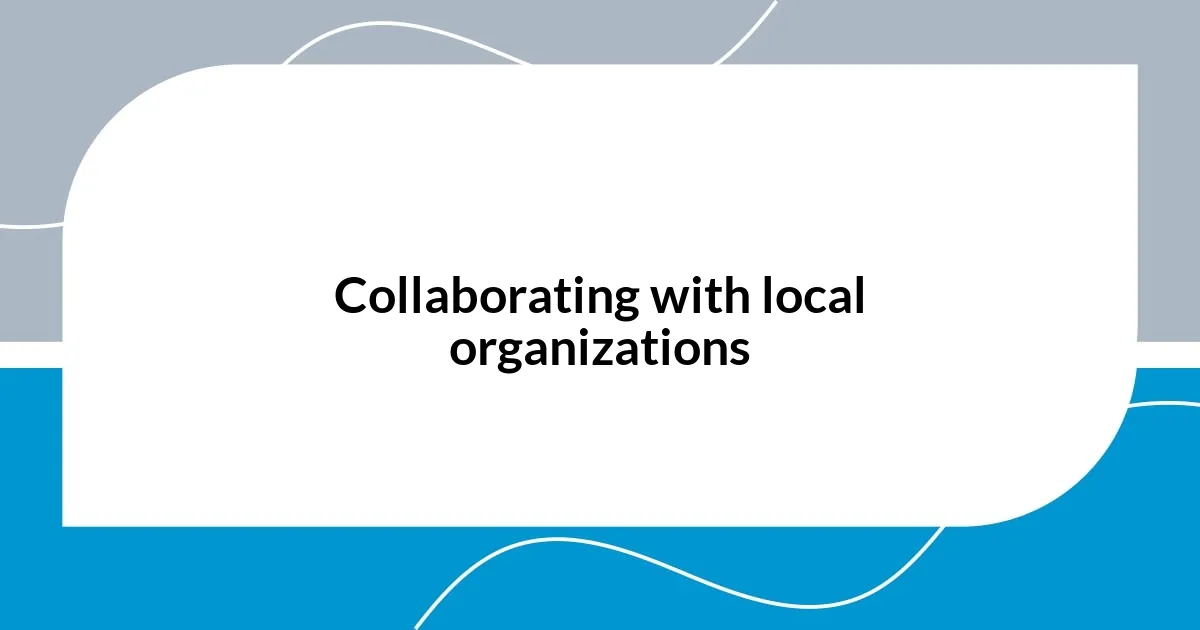
Collaborating with local organizations
Collaborating with local organizations can be a game-changer in conservation efforts, especially when it comes to engaging kids. I remember partnering with a nearby wildlife rehabilitation center for an event. The excitement among the kids was electric when they got to meet an injured owl up close. Seeing their wide eyes and whispering questions about the owl’s story made it clear—real-life interactions solidify their understanding of wildlife and conservation in a way that no classroom lesson can.
It’s also insightful to tap into the expertise that local organizations bring. One year, I arranged a cleanup day with a local environmental group, and we not only picked up litter but also attended a workshop on native plants. The kids were fascinated to learn that some plants help filter toxins from the soil. Can you imagine their surprise when they realized that just by helping the environment, they were also nurturing these plants? It opened a door to conversations about ecosystems that I had never anticipated.
I’ve found that involving these organizations fosters a sense of community. I recall one instance where a local nature reserve invited us for a guided hike. The ranger made it interactive by letting the kids identify animal tracks and listen for bird calls. When a deer appeared in the distance, I’ll never forget the collective gasp and sense of awe that rippled through the group. It really emphasized to me how community collaboration not only amplifies learning but also creates cherished memories that inspire the next generation of conservationists.
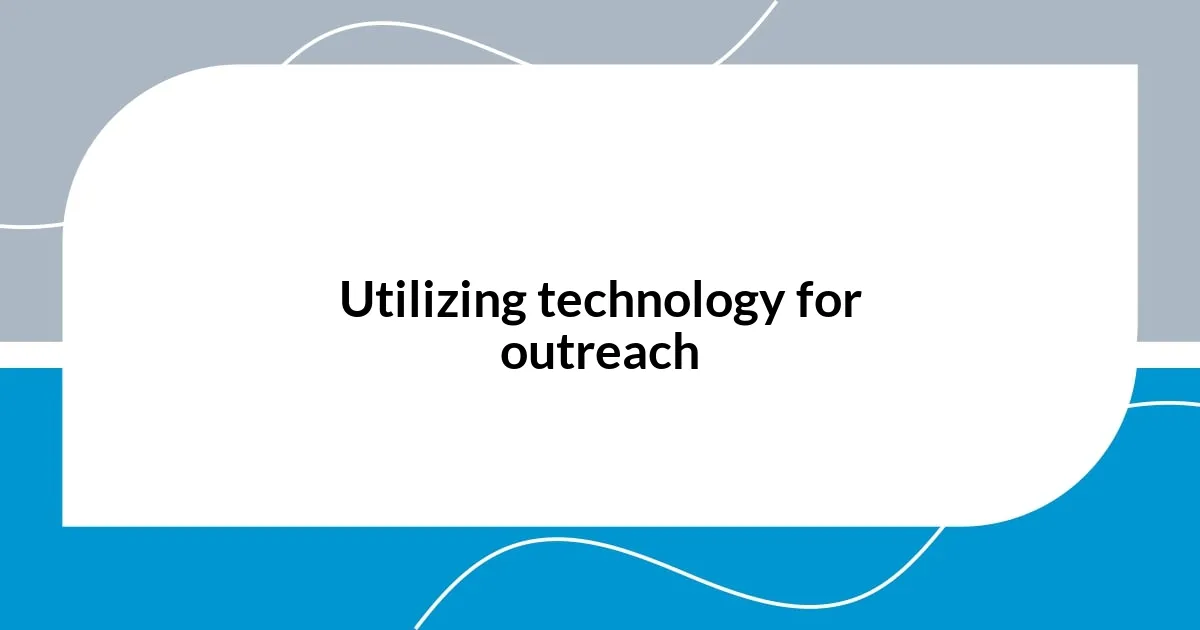
Utilizing technology for outreach
Using technology for outreach has been a transformative experience for me. I once organized a virtual field trip where kids could explore national parks through an interactive website. Their faces lit up as they “hiked” trails, spotting digital wildlife and answering quiz questions about conservation. It was incredible to see how technology can break barriers, allowing them to engage with nature from the comfort of their homes. Have you ever considered how virtual experiences can spark a child’s curiosity about the environment?
I also experimented with social media platforms to create a wildlife photo contest among the kids. They uploaded their best nature shots, and the excitement was palpable! Not only did this encourage them to explore their surroundings, but it also fostered a supportive online community where they cheered each other on. I was pleasantly surprised by how the kids gained confidence as they shared their love for nature with their peers. Isn’t it amazing how a simple digital platform can amplify a child’s enthusiasm for conservation?
Another innovative approach I implemented was using educational games that focused on environmental challenges. Once, during an after-school program, we used an app that simulated ecosystem management. It challenged the kids to make decisions about resource allocation while facing obstacles like drought and pollution. I could see them deep in thought, discussing strategies with their friends. It was a thrill to witness their critical thinking skills flourish in a playful environment, showing me that learning through technology can be both fun and impactful. What if every child could experience this level of engagement with conservation?
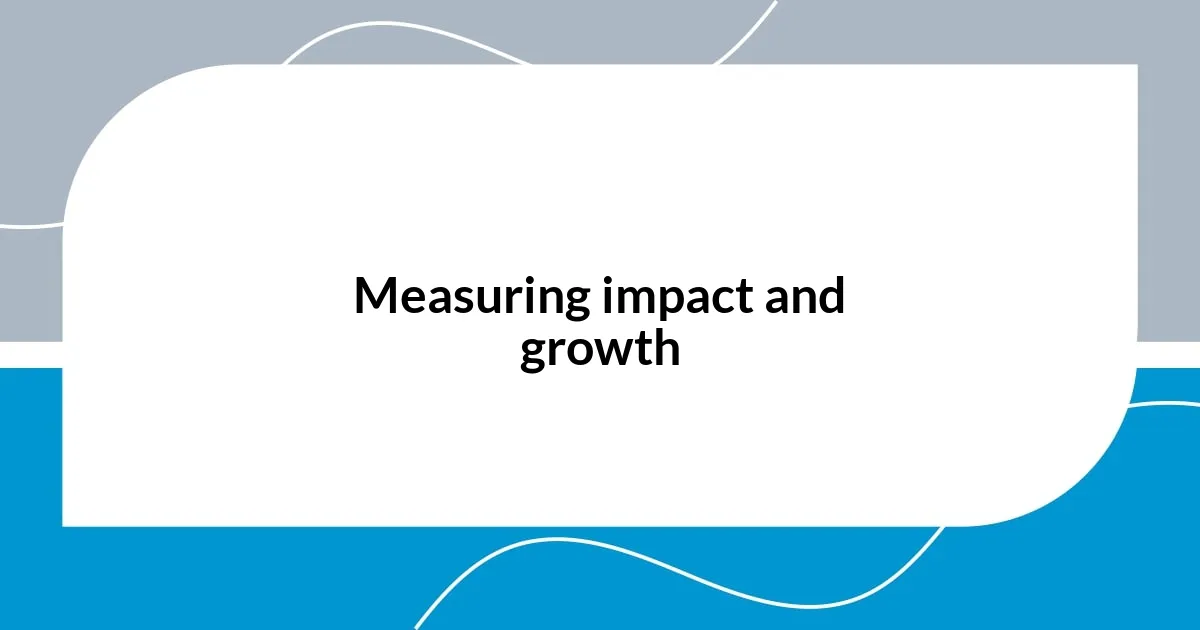
Measuring impact and growth
Measuring the impact of conservation activities often feels like piecing together a puzzle. For instance, after hosting a tree-planting event, I followed up with a simple survey to gauge what the kids had learned about their role in the environment. The responses were eye-opening; many expressed a newfound appreciation for trees and even mentioned their intent to plant more in their own backyards. Isn’t it heartwarming to see such genuine interest blossom from just one day of hands-on involvement?
I’ve also found that tracking long-term involvement can provide deeper insights into growth. A few years back, I started a monthly conservation club for kids interested in wildlife. Initially, we had a handful of participants, but over time, many returned and brought friends. I realized that their ongoing engagement wasn’t just about the fun activities—it was about building relationships and a shared passion. What if those connections are the very foundation upon which future leaders in conservation are built?
Additionally, integrating feedback can refine and enrich our conservation efforts. I recall a particularly enthusiastic group who suggested we incorporate more art projects to express what they learned. Implementing this idea led to a stunning mural dedicated to local wildlife at our community center. Watching their excitement as they painted was unforgettable. It made me wonder: how can we harness that creativity to further inspire future conservationists?
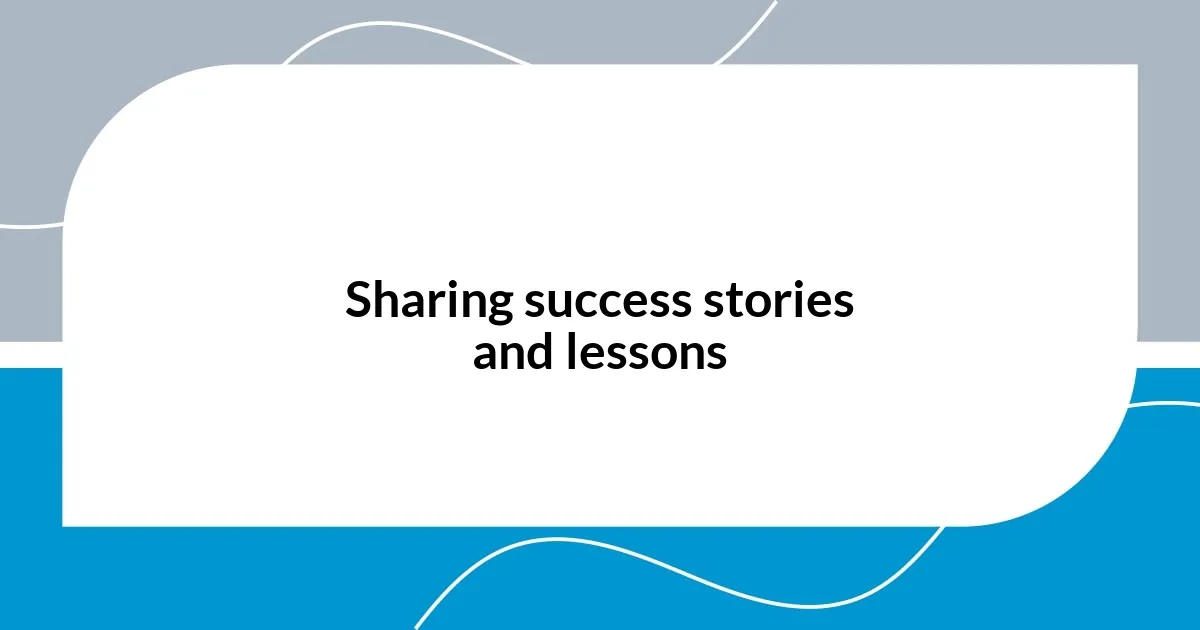
Sharing success stories and lessons
Sharing success stories can truly ignite a passion for conservation among kids. One of my fondest moments was when a young girl in my program wrote a heartfelt letter to her local council about protecting a nearby wetland. After seeing her ideas presented at a community meeting, she beamed with pride and confidence. It made me wonder—how often do we underestimate children’s ability to influence their communities? Witnessing her advocacy breathed life into the lessons we shared, proving that empowered kids can cultivate change.
Equally impactful were the group projects we initiated, where kids collaborated on creating butterfly gardens in their neighborhoods. Watching them work together, digging in the soil and planting flowers, was inspiring. They didn’t just learn about biodiversity—they felt it in their hands, their laughter ringing out as they raced to see who could plant the most. Looking back, it was a tangible reminder of how hands-on experiences can cement a sense of responsibility toward the environment. What joy it is to see young people take ownership of their learning!
Moreover, sharing reflections—those moments when kids process what they’ve done—has been immensely rewarding. I recall one session where we sat in a circle, and a boy shared how saving water at home became a family routine after learning why it’s crucial. The glimmer in his eye as he spoke was unforgettable; it revealed a shift in mindset that could ripple through his family. How often do we witness such transformations? Each success story reinforces my belief that sharing these experiences can motivate others to join the conservation journey, creating a community of young environmental stewards ready to make a difference.